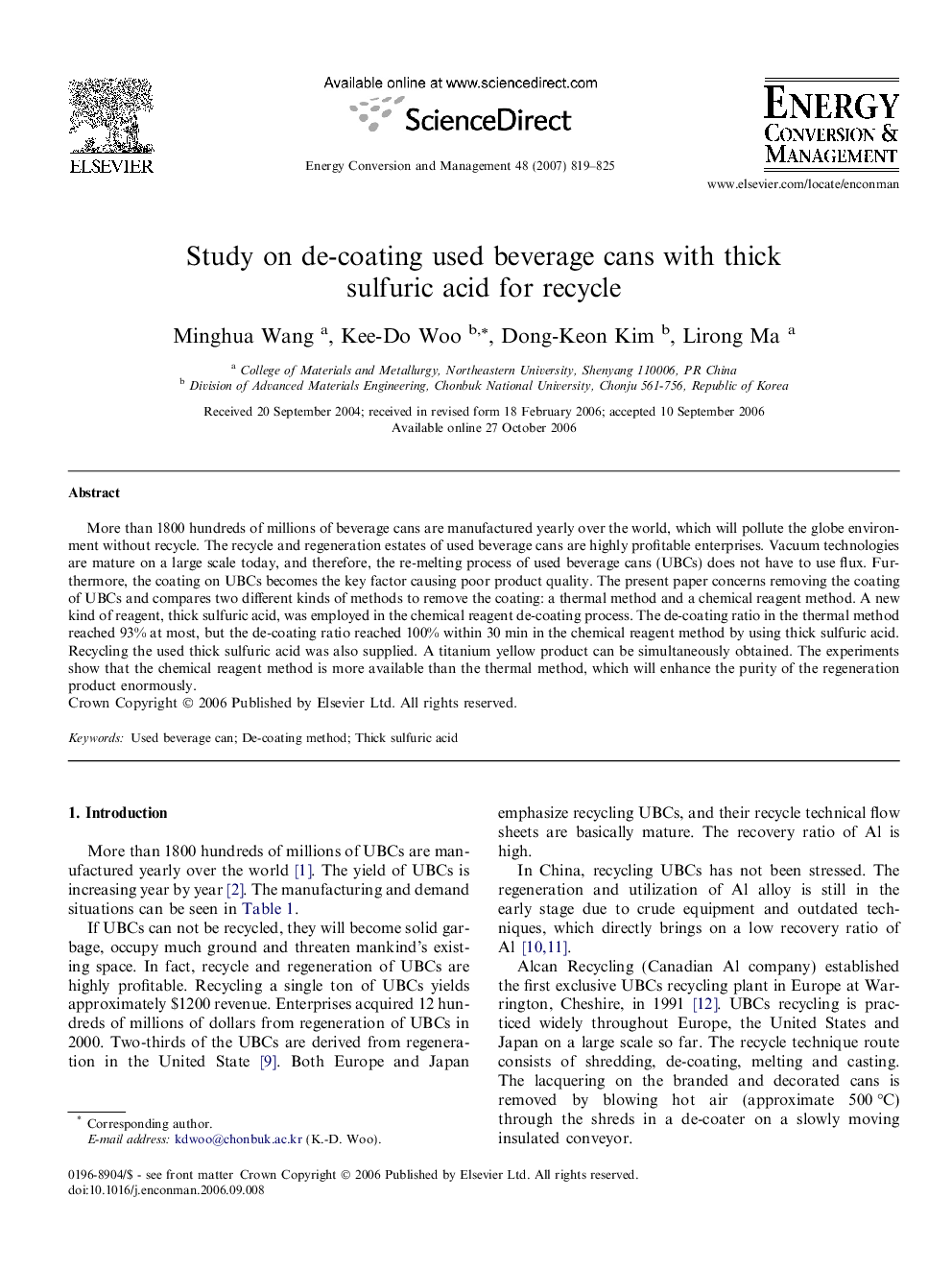| Article ID | Journal | Published Year | Pages | File Type |
|---|---|---|---|---|
| 766548 | Energy Conversion and Management | 2007 | 7 Pages |
More than 1800 hundreds of millions of beverage cans are manufactured yearly over the world, which will pollute the globe environment without recycle. The recycle and regeneration estates of used beverage cans are highly profitable enterprises. Vacuum technologies are mature on a large scale today, and therefore, the re-melting process of used beverage cans (UBCs) does not have to use flux. Furthermore, the coating on UBCs becomes the key factor causing poor product quality. The present paper concerns removing the coating of UBCs and compares two different kinds of methods to remove the coating: a thermal method and a chemical reagent method. A new kind of reagent, thick sulfuric acid, was employed in the chemical reagent de-coating process. The de-coating ratio in the thermal method reached 93% at most, but the de-coating ratio reached 100% within 30 min in the chemical reagent method by using thick sulfuric acid. Recycling the used thick sulfuric acid was also supplied. A titanium yellow product can be simultaneously obtained. The experiments show that the chemical reagent method is more available than the thermal method, which will enhance the purity of the regeneration product enormously.
